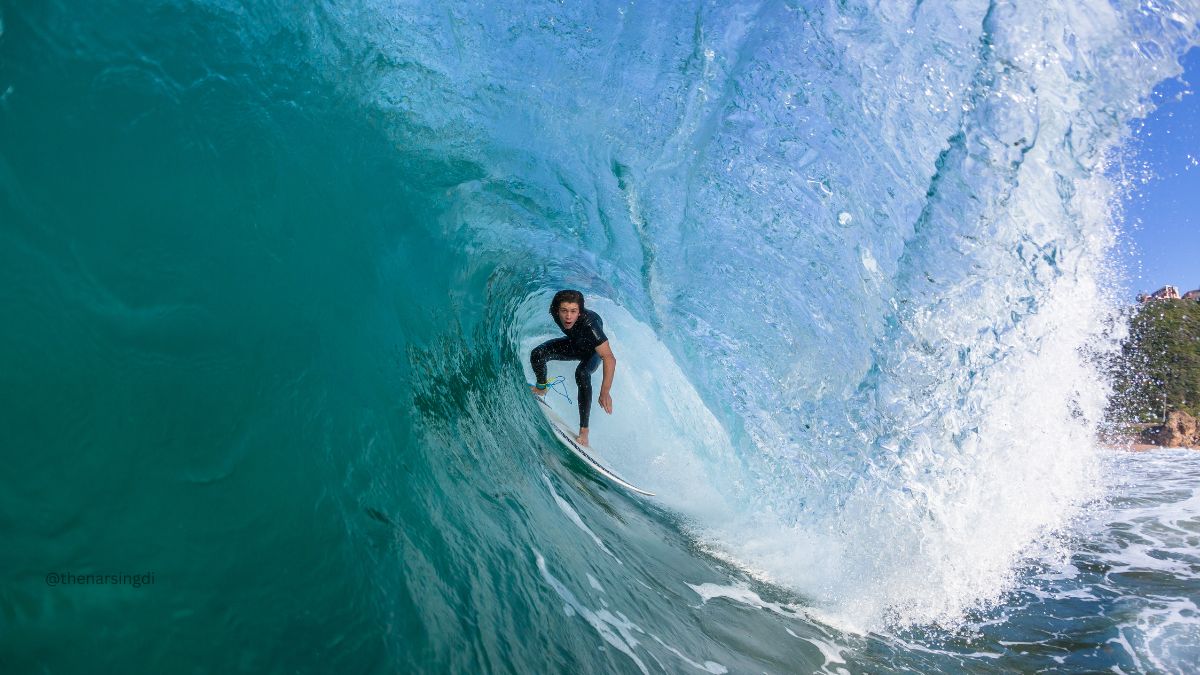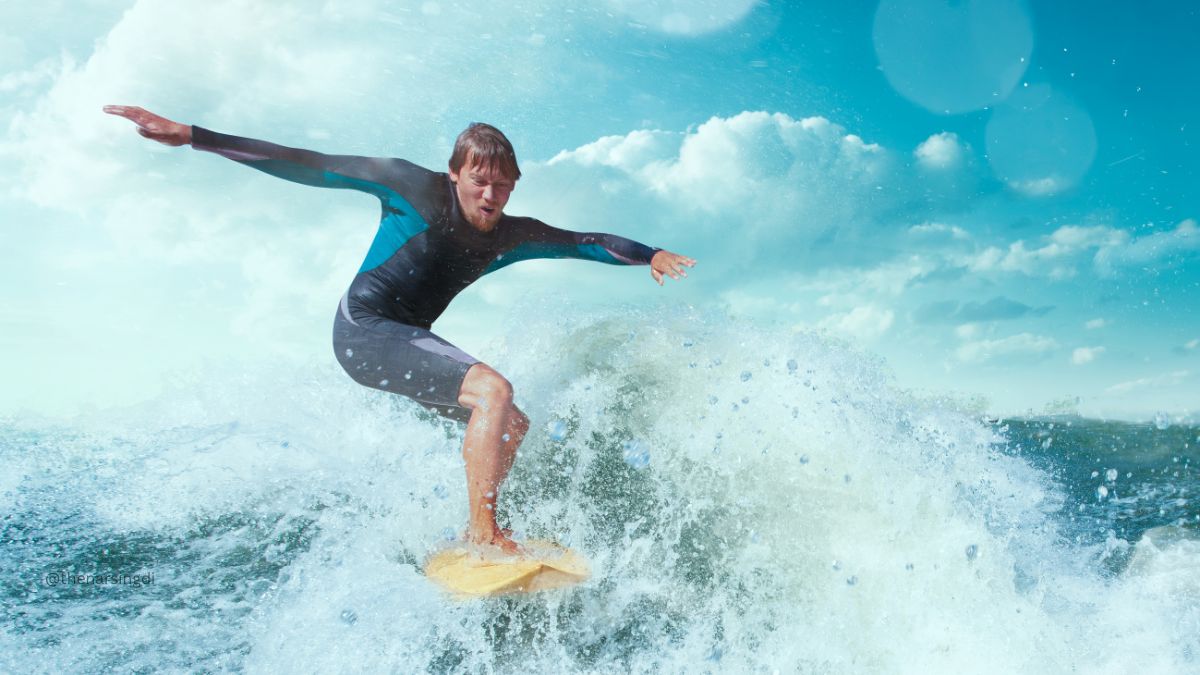How to learn surfing by yourself? Teaching yourself to surf can be an incredibly rewarding adventure, offering a mix of challenge, excitement, and connection with the ocean.
Teach yourself catching that first wave, the surge of adrenaline as you rise to your feet, and the pure joy of gliding across the water.
While surfing might appear to be overwhelming from the outset, with commitment, persistence, and the right direction, you can gain proficiency with the basics and steadily foster the abilities to dominate the waves.
This guide will equip you with the knowledge to start your solo surfing journey with confidence. Let’s dive in and begin your transformation into a self-taught surfer!

Can you learn to surf on your own:
TOC
Indeed, you can figure out how to surf all alone, yet it requires persistence, responsibility, and a profound regard for the sea. Start by learning the basics, selecting the right beginner-friendly surfboard, and practicing on land before venturing into the water.
Begin with small, gentle waves at a suitable beach, focusing on balance and mastering the pop-up technique. Safety is crucial—avoid surfing alone, learn surf etiquette, and recognize your limits.
While self-teaching is achievable, a few lessons from a professional can help you progress faster. With persistence, you’ll gradually gain the skills needed to surf with confidence.
Read More: How To Surf For First Time
How To Learn Surfing By Yourself:
Learning to surf on your own can be a rewarding experience if you approach it with the right mindset and preparation. Here’s a step-by-step guide how to learn surfing by yourself:
1. Research and Understand the Basics
- Learn Surfing Terminology: Get familiar with key terms like “popping up,” “whitewater,” “duck dive,” and “rip current.”
- Understand Wave Mechanics: Study how waves form and what conditions are best for beginners.
- Watch Tutorials and Read Guides: Utilize online videos and articles to grasp the fundamentals of surfing.
2. Choose the Right Gear
- Select a Beginner-Friendly Surfboard: Opt for a larger, stable board, such as a foamboard or longboard, which offers better balance and ease of paddling.
- Get a Proper Wetsuit: Choose a wetsuit that suits the water temperature, keeping you warm and comfortable.
- Use Surf Wax: Apply wax to your board to further develop grasp.
3. Find the Right Location
- Pick a Beginner-Friendly Beach: Choose a beach with small, gentle waves and a sandy bottom.
- Avoid Advanced or Crowded Spots: Steer clear of beaches known for big waves or strong currents.
4. Practice on Land
- Learn to Pop Up: Practice the motion of going from lying down to standing on your board while still on land. This helps build muscle memory.
- Determine Your Stance: Sort out whether or not you’re standard footed (left foot forward) or silly footed (right foot forward).
5. Get Comfortable in the Water
- Start with Whitewater Waves: Begin in the shallow part of the water, catching already broken waves to get a feel for balance and timing.
- Focus on Paddling: Practice paddling out and positioning your board to catch waves effectively.
6. Master the Basics
- Catching Waves: Paddle strongly and increase speed as the wave approaches to match its momentum.
- Popping Up: When you feel the wave pushing you, immediately spring up into a standing position.
- Balance on the Board: Keep your knees slightly bent and your weight centered.
7. Build Your Skills
- Observe Other Surfers: Watch experienced surfers to learn how they position themselves and catch waves.
- Experiment with Larger Waves: As you gain confidence, try riding slightly bigger waves to improve your skills.
- Practice Regularly: Surfing is about repetition—practice consistently to progress.
8. Prioritize Safety
- Never Surf Alone: Especially as a beginner, make sure there are others nearby when you surf.
- Learn Surf Etiquette: Regard different surfers, abstain from dropping in on waves, and adhere to fundamental riding guidelines.
- Know Your Limits: Be aware of when conditions are too challenging for your current skill level.
9. Consider Occasional Guidance
- Take a Lesson or Two: Even if you’re teaching yourself, a few professional lessons can refine your technique and boost your confidence.
10. Enjoy the Journey
- Embrace the Learning Curve: Surfing has a steep learning curve, so be patient and celebrate small victories.
- Have Fun: Remember, surfing is about enjoying the ocean and the experience—don’t let challenges discourage you; keep having fun.
It requires time and persistence, but with dedication, you’ll develop the skills needed to ride the waves confidently.
Take Away:
- how to learn surfing by yourself? With dedication and the right approach, you’ll soon be catching waves with confidence.
- Always prioritize your safety by choosing conditions that match your skill level. The ocean is your playground, but it’s also a powerful force—respect it. If these tips have inspired you, connect with us on social media to share your surf stories, seek advice, and meet like-minded wave riders.
- Join on Pinterest & drop a comment below with your experiences. Catch you in the surf!
FAQs:
Q. can you learn to surf in a day?
You might catch a few waves and get a taste of surfing in a single day, but becoming a pro isn’t realistic in that timeframe. While you can grasp the basics like paddling and riding small waves, mastering surfing takes consistent practice over weeks or months.
Q. What’s the best surfboard for newbies?
For those just starting out, a soft-top longboard is your best bet. Its wide, stable surface makes balancing and catching waves much easier, providing a smoother learning experience and helping you gain confidence faster.
Q. Is a wetsuit necessary for surfing?
If you’re hitting the waves in cooler waters, a wetsuit is a must. It keeps you warm and extends your time in the water. In warmer regions, you might get by with just a rash guard or your usual swimwear.
Q. How can I stay safe while surfing solo?
Surfing alone means extra vigilance. Always let someone know where you’ll be, choose spots with lifeguards, and familiarize yourself with the local conditions. Being aware of rip currents and knowing how to handle them is crucial for your safety.
Q. How long does it take to become a good surfer?
Becoming skilled at surfing is a journey, not a sprint. With regular practice, you’ll see noticeable improvements within a few weeks. Devotion, progressing practice, and persistence are vital for your riding development.

Its Aliza R. Khan, a passionate travel blogger from Bangladesh. With a knack for inspecting hidden gems and sharing travel tips, I love to inspires readers to explore the world with curiosity and adventure.










